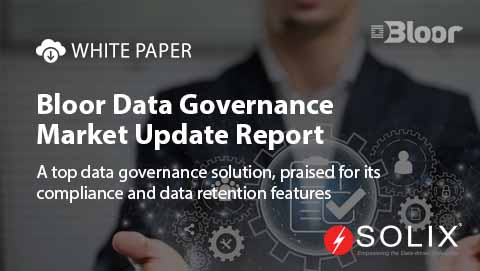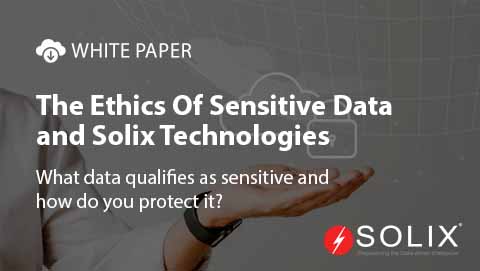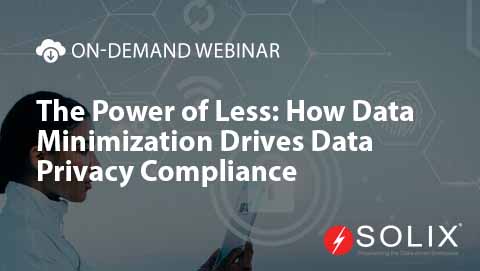Data Tiering Compliance What You Need to Know
If youre navigating the complex world of data management, you may be asking yourself what exactly is data tiering compliance, and why is it essential In simple terms, data tiering compliance refers to the strategic organization of data based on its importance, sensitivity, and regulatory requirements. By classifying data into different tiers, organizations can make more informed decisions about storage, access, and usage to meet various compliance standards.
As we delve deeper into data tiering compliance, youll discover how it aligns with best practices in data management and the solutions available from Solix to help you achieve it effectively. Having a comprehensive grasp of this concept can make a world of difference in your organizations compliance posture and overall data strategy.
Understanding Data Tiering Compliance
Fundamentally, data tiering compliance is about ensuring that data is managed, stored, and accessed in a compliant manner throughout its lifecycle. This means classifying data based on factors such as how often it is accessed, its level of sensitivity, and the applicable regulatory requirements.
For instance, personally identifiable information (PII) or financial records might be classified as high-tier data that requires strict access controls and monitoring. Conversely, less sensitive information could be stored in lower-cost, lower-security tiers. This approach helps organizations optimize their storage costs while maintaining compliance with regulations like GDPR or HIPAA.
The Importance of Data Tiering Compliance
Data tiering compliance is crucial for several reasons. Firstly, it reduces the risk of data breaches by ensuring that sensitive data is stored securely and accessed only by those who need it. Secondly, it helps organizations meet legal and regulatory obligations, avoiding hefty fines and reputational damage.
From my experience working in the data management field, Ive seen firsthand the consequences of neglecting compliance. A colleague once recounted how their organization faced severe penalties due to improper handling of customer data, which could have been avoided with a robust data tiering strategy. This real-world example emphasizes the significance of integrating data tiering compliance into your business processes.
Real-Life Application of Data Tiering Compliance
Lets visualize this concept with a scenario. Imagine you work for a healthcare organization storing medical records, patient data, and administrative information. By implementing a data tiering strategy, you classify medical records as top-tier due to their sensitivity and regulatory requirements. Administrative information, while still important, can be placed in a lower tier where security measures can be less stringent.
In this example, the organization can apply stringent security controls on top-tier data, ensuring strict access permissions. Simultaneously, lower-tier data can be stored in more cost-effective solutions without compromising compliance. This practice not only saves money but also enhances data management efficiency.
How Solix Can Support Your Data Tiering Compliance
To navigate the complexities of data tiering compliance, it is beneficial to leverage specialized tools and services. Solix offers comprehensive solutions designed to simplify data regulation compliance. Their Data Management Platform speaks volumes about how organizations can streamline their data processes and ensure that all tiers of data are compliant and easily accessible when needed.
Utilizing the Data Management Platform from Solix, you can automate the classification, storage, and access controls for your data, significantly easing the burden of compliance. The platform allows organizations to implement data tiering strategies that not only promote regulatory adherence but also enhance operational efficiency.
Actionable Recommendations for Achieving Data Tiering Compliance
Here are some actionable steps that organizations can take to enhance their data tiering compliance
1. Assess Your Data Start by conducting a thorough assessment of the data your organization collects and stores. Identify sensitive information and categorize it based on regulatory requirements.
2. Implement Classification Protocols Develop and enforce classification protocols for different data tiers. Ensure that all team members understand their responsibilities regarding data handling.
3. Invest in the Right Tools Utilize platforms like the one from Solix that facilitate automation in data management. This can save time and reduce the risk of human error.
4. Regular Audits Conduct periodic audits to verify compliance with data tiering strategies. This can help uncover potential vulnerabilities and ensure continuous improvement.
5. Educate Your Team Ongoing training is essential. Educate your staff about the importance of data tiering compliance and best practices in data management.
Wrap-Up
In todays data-centric world, data tiering compliance is not just a requirement; its a strategic advantage. By classifying and managing data appropriately, organizations can save costs, reduce risks, and enhance their compliance posture. With Solix as your partner, achieving data tiering compliance becomes a streamlined process tailored to your unique needs.
For further insights or personalized solutions, I encourage you to reach out to Solix at 1.888.GO.SOLIX (1-888-467-6549) or fill out the contact form for assistance. Your path to robust data management and compliance success starts here!
About the Author
Hi, Im Sam! With years of experience in data management, I have a deep understanding of data tiering compliance and how it impacts organizational success. I enjoy sharing insights to help others navigate the complexities of data regulations.
Disclaimer The views expressed in this blog are my own and do not reflect the official position of Solix.
Sign up now on the right for a chance to WIN $100 today! Our giveaway ends soon‚ dont miss out! Limited time offer! Enter on right to claim your $100 reward before its too late!
-

-

-
 On-Demand Webinar
On-Demand WebinarThe Power of Less: How Data Minimization Drives Data Privacy Compliance
Watch On-Demand Webinar
